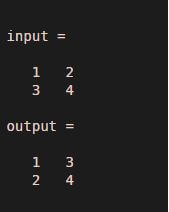

This phase describes the implementation of the transposition process. The IP is performed before the first round.

The plain text is divided into smaller chunks of 64-bit size. Gain expertise in IT Security including security and risk management, and more with CISSP Certification Training Course.

The NIST officially withdrew FIPS 46-3 (the 1999 reaffirmation) in May 2005, although Triple DES (3DES), remains approved for sensitive government information through 2030. DES uses 16 rounds of the Feistel structure, using a different key for each round.ĭES became the approved federal encryption standard in November 1976 and was subsequently reaffirmed as the standard in 1983, 1988, and 1999.ĭES’s dominance came to an end in 2002, when the Advanced Encryption Standard (AES) replaced the DES encryption algorithm as the accepted standard, following a public competition to find a replacement. History of DES AlgorithmĭES is based on the Feistel block cipher, called LUCIFER, developed in 1971 by IBM cryptography researcher Horst Feistel. If it were an asymmetrical algorithm, it would use different keys for encryption and decryption. Since it’s a symmetric-key algorithm, it employs the same key in both encrypting and decrypting the data. The algorithm takes the plain text in 64-bit blocks and converts them into ciphertext using 48-bit keys. The DES (Data Encryption Standard) algorithm is a symmetric-key block cipher created in the early 1970s by an IBM team and adopted by the National Institute of Standards and Technology (NIST). What is the DES Algorithm in Cyber Security? For example, a 128-bit key requires 10 rounds, a 192-bit key requires 12 rounds, and so on. Depending upon the size of the key being used, the number of rounds varies. The DES process has several steps involved in it, where each step is called a round. Using this key, the DES takes a block of 64-bit plain text as input and generates a block of 64-bit cipher text. The DES algorithm uses a key of 56-bit size.
#Permute function matlab crack#
There are certain machines that can be used to crack the DES algorithm. Here we discuss an introduction to Permute Matlab, syntax, and implementation with programming examples.DES stands for Data Encryption Standard.

By using permute command we can handle large data and n number of elements.
#Permute function matlab how to#
In this article, we have seen how to use permute and ipermute command and how to arrange elements in matrix or multidimensional array or vector. If we observe the output of three matrix and sizes of three matrices then all the dimensions are different. here we have changes order three times to check the size of the output matrix. Here we consider one random input of parameters ( 9, 1 0, 1 1) which represents a total eleven matrix, nine rows, and 10 columns. In this example, we will use one feature of the permuted matrix that is size. If we observe both the outputs then the output of example 2(b) is the transpose of the output of Example 2 (a) and vice versa. Implementation of example 2 (a) shows permute command and example 2 (b) shows ipermute command. Along with the input we have pass order as. In this example, we randomly created an input matrix with three rows and two columns and there are three such matrices. Row 1 elements are 1 and 2 and row 2 elements are 3 and 4. Let us assume one matrix input with two rows and two columns. Examples to Implement Permute Matlabīelow are the examples mentioned : Example #1 It reduces the complexity of the system and helps to understand the problem in a better way. so while solving matrix or multidimensional problems but if we face size overfitting or underfitting issues then we can use permute and ipermute commands. The main principle of permuting is to rearrange the elements of multi-dimensional matrix.


 0 kommentar(er)
0 kommentar(er)
